-
PDF
- Split View
-
Views
-
Cite
Cite
Content Snapshot, Annals of Botany, Volume 125, Issue 7, 4 June 2020, Pages i–iii, https://doi.org/10.1093/aob/mcaa087
Close - Share Icon Share
Pollen on stigmas and plant–plant interactions (Viewpoint)
Annals of Botany 125: 1003–1012, 2020
doi: 10.1093/aob/mcaa012
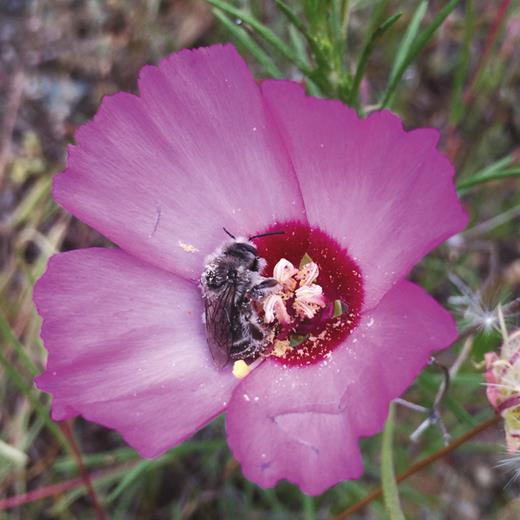
Pollen captured on stigmas can show aspects of pollinator-mediated plant–plant interactions. Both conspecific and heterospecific pollen are deposited on stigmas leading to among flower covariation between them as well as between conspecific pollen tube growth and heterospecific pollen load. The patterns identified have been heralded as proxies for specific types of plant–plant interactions. Ashman et al. critically evaluate whether patterns of heterospecific and conspecific pollen can reflect competition and facilitation. They conclude that other factors related to pollen transfer can generate the same patterns necessitating a broader empirical approach to understanding the nature of pollinator-mediated plant–plant interactions.
Authors: Tia-Lynn Ashman, Conchita Alonso, Victor Parra-Tabla and Gerardo Arceo-Gómez
Climate change and seed germination
Annals of Botany 125: 1013–1023, 2020
doi: 10.1093/aob/mcaa025
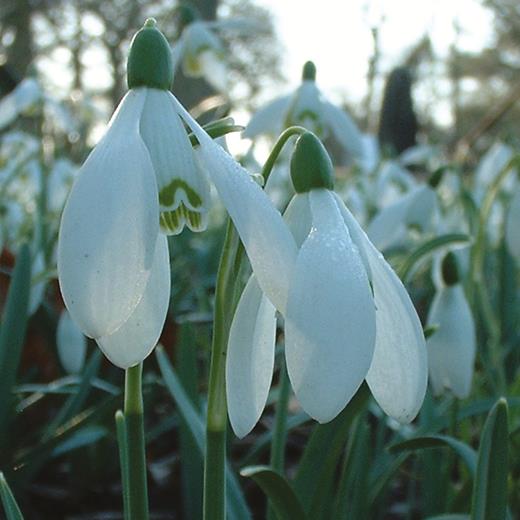
Climate change will affect regeneration of the temperate woodland species Galanthus nivalis and Narcissus pseudonarcissus (Amaryllidaceae) from seed. In these species with complex seed dormancy, Newton et al. set up a factorial experiment simulating both warming (+5 °C) and cooling (−5 °C) to investigate seed germination patterns over seven successive seasons following seed dispersal in late spring. Germination in the summer remained negligible with warming in both species. In contrast, warmer autumns and winters delayed germination of N. pseudonarcissus to winter but advanced it in G. nivalis. Warming will deplete the soil seed bank of both species, making annual seed influx increasingly important for recruitment and persistence.
Authors: Rosemary J. Newton, Fiona R. Hay and Richard H. Ellis
For a Commentary on this article, see this issue p. iv.
Chromosome evolution and asymmetrical meiosis
Annals of Botany 125: 1025–1038, 2020
doi: 10.1093/aob/mcaa028

Pentaploid (2n = 5x = 35) dogroses of the genus Rosa (section Caninae) evolved a peculiar reproductive system characterized by a skewed inheritance of genetic material via a non-symmetrical meiosis. Their chromosomes are known to form 7 bivalents and 14 univalents in meiosis. Using cytogenomic approaches, Lunerova et al. identify a highly abundant pericentromeric satellite which appears to be markedly amplified on univalent chromosomes compared with bivalent chromosomes in pollen meiotic cells. They argue that the satellite DNA expansion may contribute to the divergence of non-recombining univalent chromosomes in Rosa species with non-symmetrical meiosis.
Authors: Jana Lunerová, Veit Herklotz, Melanie Laudien, Radka Vozárová, Marco Groth, Aleš Kovařík and Christiane M. Ritz
For a Commentary on this article, see this issue pp. v–vi.
Phylogeny, age and adaptive evolution of the genus Allium
Annals of Botany 125: 1039–1055, 2020
doi: 10.1093/aob/mcaa024
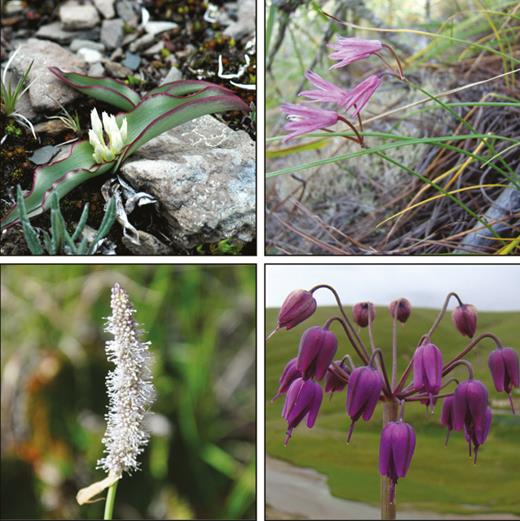
Allium, as one of the largest monocotyledonous genera, has been the focus of classification or phylogeny studies for centuries. Xie et al. develope well-supported phylogenetic relationships of Allium species based on 39 plastid genomes and show that three evolutionary lines differentiated in the early Eocene to the middle Miocene. Positive selected genes (PSGs), as well as diversified plant morphologies, complicate chromosome characteristics and unique reproductive modes play important roles in the adaptive evolution of Allium.
Authors: Deng-Feng Xie, Jin-Bo Tan, Yan Yu, Lin-Jian Gui, Dan-Mei Su, Song-Dong Zhou and Xing-Jin He
Chromosomal organization of rDNA loci in liverworts
Annals of Botany 125: 1057–1064, 2020
doi: 10.1093/aob/mcaa027
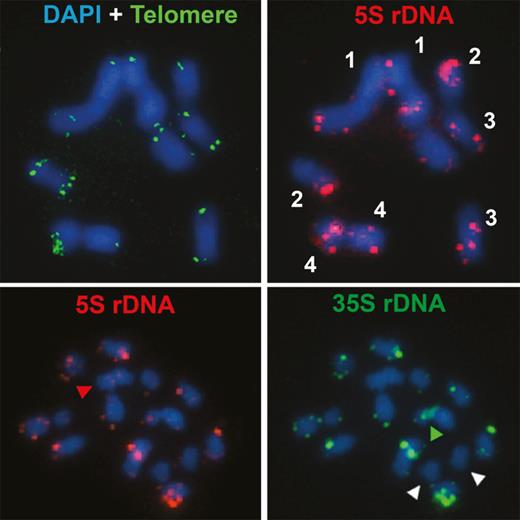
Sousa et al. analyse the chromosomal location of 5S and 35S rDNA using fluorescent in situ hybridization, in monoicous and dioicous liverworts (Marchantiophyta) to test whether their rDNA is usually physically linked (L type) or arranged on separate chromosomes (S type). Four species have S-type rDNA, while five species have mixed L–S rDNA organization, and transitions appear to have occurred multiple times. These findings suggest that the transcription of 35S and 5S inside or outside the nucleolus is evolutionarily flexible. All species shared an Arabidopsis-like telomere motif, and its detection verified chromosome numbers of Radula complanata and rearrangements in Aneura pinguis and Plagiochila aspleinoides.
Authors: Aretuza Sousa, Julia Bechteler, Eva M. Temsch and Susanne S. Renner
Calluna vulgaris metabolites under climate change
Annals of Botany 125: 1065–1075, 2020
doi: 10.1093/aob/mcaa037

Climate changes are reprogramming plant secondary metabolism. Li et al. report experiments with Calluna vulgaris (Ericaceae) at the Free-Air Carbon Dioxide Enrichment (FACE) facility in Copenhagen, Denmark. They found that drought reduces production of plant phenolics and volatiles, while elevated carbon dioxide mitigates deleterious effects of drought, with little effect of nighttime warming. This indicates that, in natural ecosystems, co-occurring climate factors can exert complex impacts on plant secondary metabolite profiles, which may in turn alter ecosystem processes.
Authors: Tao Li, Päivi Tiiva, Åsmund Rinnan, Riitta Julkunen-Tiitto, Anders Michelsen and Riikka Rinnan
Peru fossil forest
Annals of Botany 125: 1077–1089, 2020
doi: 10.1093/aob/mcaa039
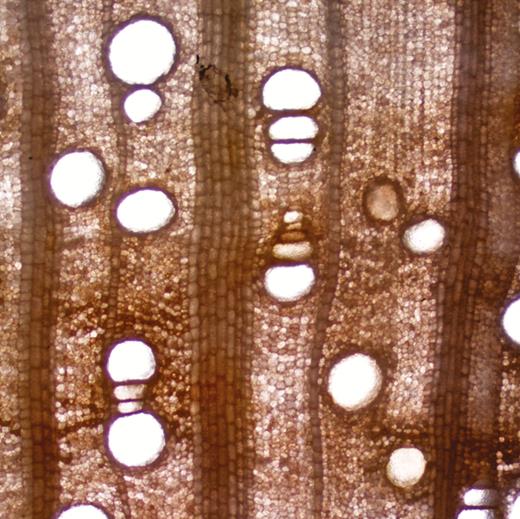
The 39-million-year-old Piedra Chamana fossil forest provides a record of the vegetation of tropical South America early in the history of the New World tropical forests during a time of global warmth. Woodcock and Meyer analyse the anatomical and morphological characteristics of the woods and leaves, and find many similarities with modern tropical forests, especially semi-deciduous lowland tropical forest with moderate precipitation (dry tropical forest). Vessel-related features unusual for the modern South American tropics (prevalence of semi-ring porous woods) may relate to differences in seasonality and water stress in the past compared to the present-day Neotropics.
Authors: Deborah W. Woodcock and Herbert W. Meyer
Chloroplast mediates nitrate-stimulated seed germination in the dark
Annals of Botany 125: 1091–1099, 2020
doi: 10.1093/aob/mcaa040
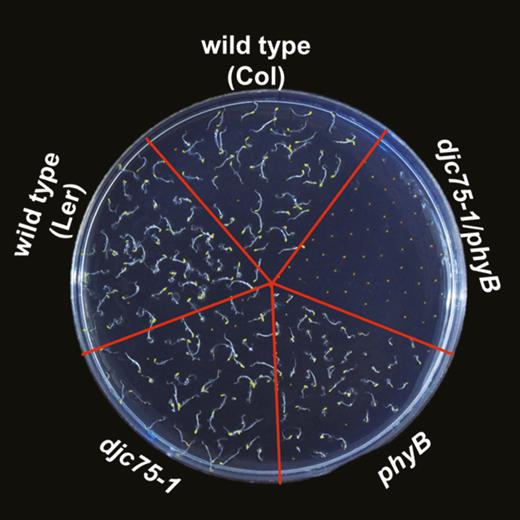
In many species, nitrate promotes seed germination in the light or the dark. A few components of nitrate-promoted seed germination have been characterized under light conditions. In contrast, the mechanism underlying nitrate-promoted seed germination in the dark remains largely unclear and no component for this pathway has been identified so far. Ciou et al. conducted experiments using mutants and inactivating phyB to explore how the plastid J-domain protein, DJ75/CRRJ, in the chloroplast regulates seed germination in the dark of the thale cress Arabidopsis thaliana. DJC75 is the first pathway component identified for nitrate-promoted seed germination in the dark.
Authors: Huai-Syuan Ciou, Yu-Lun Tsai and Chi-Chou Chiu
Xylem adjustments across elevation and latitude in Nothofagus
Annals of Botany 125: 1101–1112, 2020
doi: 10.1093/aob/mcaa042

Plants have the potential to adjust the configuration of their hydraulic system to maintain its function across spatial and temporal gradients. García-Cervigón et al. characterized xylem configuration in branches of Nothofagus pumilio (Nothofagaceae) at five sites across an 18º latitudinal gradient in the Chilean Andes, sampling at four elevations per site and analysing the last five growth rings per branch. Despite conspicuous adjustments to temperature, moisture and the combination thereof, xylem traits were coordinated to maintain the hydraulic function constant. This, combined with the within-individual capacity for responding to year-to-year climatic variations, may have the potential to increase forest resilience against future environmental changes.
Authors: Ana I. García-Cervigón, Alex Fajardo, Cristina Caetano-Sánchez, J. Julio Camarero and José Miguel Olano
Inferring invasion pattern from genetic structure
Annals of Botany 125: 1113–1126, 2020
doi: 10.1093/aob/mcaa044
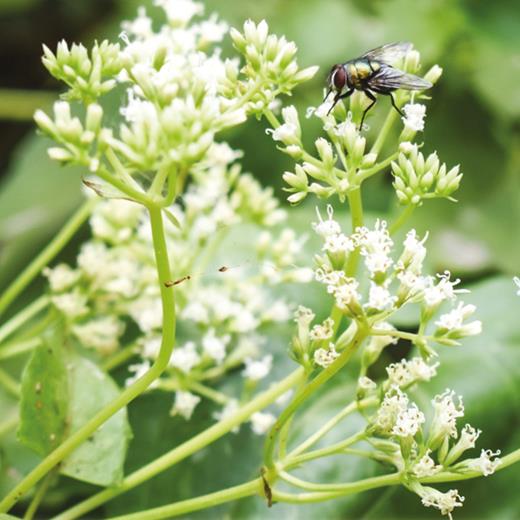
Mikania micrantha (Asteraceae), a native species to Latin America, is highly invasive in the tropical belt of Asia, Oceania and Australia. Banerjee et al. use microsatellite markers to assess the genetic structure of M. micrantha populations in its invasive range. They find high level of admixture due to persistent gene flow between multiple genetic clusters. This human-mediated gene flow causes low genetic differentiation among populations and provides beneficial genetic variation to the marginal populations leading to range expansion of the species. Banerjee et al. emphasize continuous surveillance of anthropogenic activities and site-specific management strategies for effective control of this plant species.
Authors: Achyut Kumar Banerjee, Zhuangwei Hou, Yuting Lin, Wentao Lan, Fengxiao Tan, Fen Xing, Guanghe Li, Wuxia Guo and Yelin Huang
Herkogamy in blue- and red-flowered lineages of Lysimachia arvensis
Annals of Botany 125: 1113–1126, 2020
doi: 10.1093/aob/mcaa047
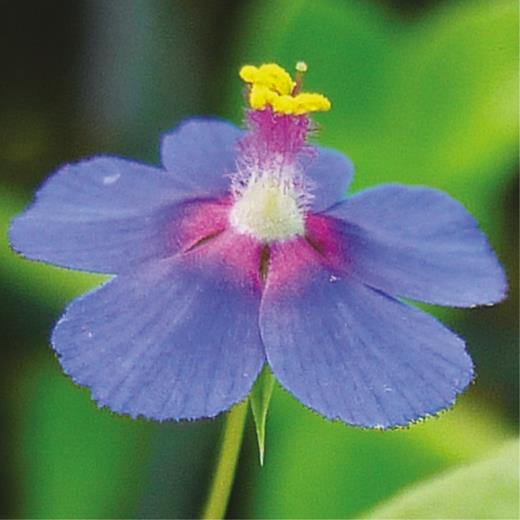
Spatial separation of anthers and stigma within a flower (herkogamy) modulates the rate of self- versus outcross pollination. Jiménez-López et al. assess the effectiveness of vertical versus lateral herkogamy in preventing self-pollen deposition in two divergent lineages of Lysimachia arvensis (Primulaceae) differing in flower colour and distributed in pure- and mixed-colour populations. They demonstrate that self-pollen deposition is affected by the degree and mode of herkogamy, lateral herkogamy being much more effective. Flowers in mixed populations also showed reduced herkogamy. Jiménez-López et al. highlight reduced herkogamy as a potential mechanism of reproductive assurance and avoidance of reproductive interference between divergent lineages.
Authors: Francisco J. Jiménez-López, Pedro L. Ortiz, María Talavera, John R. Pannell and Montserrat Arista
Flower orientation and butterfly pollination
Annals of Botany 125: 1137–1149, 2020
doi: 10.1093/aob/mcaa048
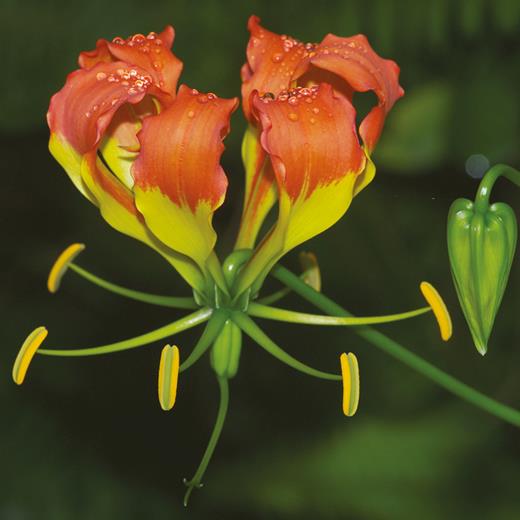
Angiosperms can evolve complex floral architectures for pollen placement on pollinators. Daniels et al. explore the functional significance of the elaborate flowers of Gloriosa superba (Colchicaceae). The flowers are divided into five meranthia with radiating anthers. One meranthium is hermaphrodite and includes the deflected stigma. Through controlled pollination experiments, they show G. superba to be self-compatible but reliant on pollinators. Butterflies are the primary pollinators transferring pollen on their ventral wing surfaces. Orientation measurements show that styles are directed towards vegetation clearings allowing incoming visitors to alight on hermaphrodite meranthia at first contact before acquiring pollen from male meranthia, hence reducing self-pollination.
Authors: Ryan J. Daniels, Steven D. Johnson and Craig I. Peter



